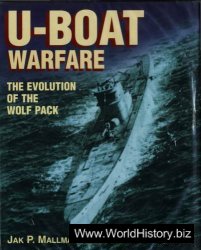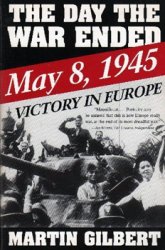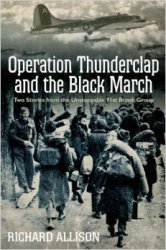The cultural creations of the Renaissance were ordered and purchased by Italian merchants
and bankers, the same sort of people who were sending ships throughout the
Mediterranean. Merchant families in Florence became tax collectors for the papacy in
the late thirteenth century, and subsequently opened banks in many European cities,
making profi ts from investments, loans, and exchanges of money. Back in Florence,
they invested in wool production, importing high-quality raw wool from England and
Spain, hiring families to carry out the various stages of production, and promoting new
techniques. Florentine cloth became the best in Europe, and was exported throughout
the Mediterranean. In the fourteenth century, towns in the Low Countries, such as
Bruges, Ypres, and Ghent, became major cloth producers, and in the fi fteenth century
towns in England did as well. The English crown encouraged cloth production by setting
a high tariff on the export of raw wool and a low tariff on the export of fi nished
cloth; by the middle of the fi fteenth century England was exporting more wool that
had been made into cloth than raw wool.
Making cloth was one of the fi rst types of production in Europe to be organized
along capitalist lines, in which the raw materials, fi nished product, and sometimes the
tools needed for production were owned by someone other than the person doing the
actual work. Cloth merchants, called drapers, purchased raw wool, hired workers for
all stages of production, and then sold the fi nished cloth. Some stages of production
might be carried out in the drapers’ homes or in buildings they owned, but more often
production was carried out in the houses of those that they hired, who were paid by
the piece rather than by the hour or day. Drapers in many towns, sometimes in combination
with the merchants of other types of products, joined together to form a
merchants’ guild that prohibited non-members from trading in the town.
Mining was also a capitalist enterprise; silver mines in Germany and Bohemia, lead
and tin mines in western England, copper mines in Spain and Sweden, iron mines in
England, Poland, and eastern France, salt mines in the Alps, all provided opportunities
for investment and for wage employment for workers. This investment paid for
deeper tunnels, more use of machinery, and more complex smelting processes, which
increased the volume and quality of metals of all types. These metals were essential to
new techniques of warfare, which required much larger quantities of metals for armor,
cannonballs, and shot.
Most goods were not produced by wage workers hired by investors, however, but through
craft guilds. Craft guilds had fi rst developed in the twelfth and thirteenth centuries; they
organized the production and sale of a particular product, regulating the hours that
could be worked, the number of workers in a shop, the amount of raw materials any
shop could obtain, the quality standards required in fi nished products, and so on. They
set down written ordinances stipulating their rules, and establishing means of governance
and enforcement. Guilds were led by master craftsmen, adult male heads of
household who had become members through producing a product judged acceptable –
a “masterpiece” – and often paying a fee. Each craftsman led his own shop, which was
located within his household unless his type of work required that he be at a specifi c
location, such as a building site. He hired an apprentice or two (the number was set
by guild regulations), boys of around ten, whose parents might sign an apprenticeship
contract. These boys learned the trade while they worked; once their apprenticeship
was fi nished (the duration was also set by regulations), they became journeymen, and
either continued to work in the same shop or traveled around working for various
masters. Some years later, they might have the opportunity to settle down, make a
masterpiece, get married, and open their own shop. Guilds created norms of masculinity
quite different from those of nobles; for guild members, the ideal man was a stable
provider for his family, not a warrior. Though women, especially the wives, daughters,
and servants of guild masters, worked in guild shops, they generally did not go through
this formal training program and had no voice in the running of the guild; guilds recognized
that wives were essential to keeping the household/workshop fed and clothed,
however, and frequently required that all masters be married. The widow of a master
might continue to operate the shop for a period of time after her husband’s death,
making her an attractive marriage partner for journeymen in the trade.
Larger cities in Europe could have hundreds of different guilds, each of which developed
a strong sense of masculine work identity and cohesion through ceremonies,
celebrations, processions, and sometimes distinctive clothing. Guilds also had noneconomic
functions: they might have a special altar dedicated to a patron saint, establish
a fund for orphans of masters, or arrange for carrying the casket in a funeral.
Though merchants’ and craft guilds dominated the economic life of cities, most of
the people who lived in cities were members of neither. They made their living producing
goods and performing services not regulated by guilds: carrying goods from place
to place, gathering and selling fi rewood, working as servants, washing clothes, selling
used clothing, repairing houses, brewing beer, caring for the sick, making simple food
items. If these means failed, they might steal or beg, sleeping in whatever cellar or attic
they could fi nd. This less prosperous and more fl uid segment of the population might
be married, but, at least in northern Europe, they might also remain unmarried; demographers
estimate that between 10 and 15 percent of the northern European population
in this era did not marry, with most of these living in cities.
During times of famine or unrest urban populations generally grew as people fl ocked
in from the countryside; cities tried to prevent this by restricting the distribution of
food to home-town poor that they regarded as “worthy,” that is, poor through no fault
of their own. Such measures did not stop the fl ow of immigrants, however, which in the
long run was fortunate as cities depended on immigration to maintain their population
levels. Not until the nineteenth century did urban birth rates outpace urban death rates,
for the tightly packed city population, crowded inside or just outside the walls, was an
ideal breeding ground for every type of disease.
The growth of cities in western Europe was made possible by economic and political
developments in the countryside. Labor obligations had begun to be replaced by cash
rents in many parts of western Europe in the thirteenth century; attempts by landlords
to reverse this trend after the Black Death provoked peasant rebellions, and were largely
unsuccessful. Though some labor services, such as fi xing roads or transporting goods
to market, remained, peasants in many areas raised crops for themselves and for the
market, not directly for their lord. A similar process had occurred somewhat earlier in
eastern Europe; greater personal freedom and better economic conditions for peasants
had contributed to growing towns and trade. This trend was reversed in the fourteenth
and fi fteenth centuries, however, and landlords used their political power to reintroduce
serfdom. Urban populations stagnated and then declined, a development welcomed by
landlords, who recognized that cities could provide a haven for runaway serfs.
Like the urban households of guild masters, peasant households were organized
around a marital couple; agricultural tasks were highly, though not completely, genderspecifi
c, so that the proper functioning of a rural household required at least one adult
male and one adult female. Remarriage after the death of a spouse was faster in the
countryside than the cities, and the number of people who remained unmarried was
much smaller. Grain-growing was the most important part of agricultural production
in most of Europe, for grain – eaten as bread or mush or drunk as beer – was the center
of the European diet. Of all the requests in the Lord’s Prayer, the most important prayer
in Christian Europe, “give us this day our daily bread” was the only one that referred to
material goods. To this grain was added whatever was locally available: berries, fruits,
nuts, butter, a little meat, herbs, vegetables, cheese.
By the fi fteenth century specialized agricultural production had also developed in
certain areas, some of which became dependent on imported grain for basic survival.
Southern Spain, Sicily, and Greece produced olives, southern France and central Italy
wine, northern Italy silk, northern France and Germany fl ax for linen. The residents of
coastal areas from Lithuania to Norway and from Portugal to Crete caught fi sh, which
they dried or salted for long-distance transport. The trade in foodstuffs gradually became
an increasingly important segment of long-distance trade, particularly when
western European merchants hooked up with eastern European noble landlords to
export grain their serfs had produced to the growing cities of the west.
Increasing shipments of foodstuffs and the growth of specialized regional economies
were dependent on sea transport, which was in turn dependent on relatively
reliable ships and at least rudimentary navigational instruments. The Vikings had
learned how to build ships that were both shallow in draft so that they could maneuver
up rivers and capable (or at least sometimes capable) of withstanding fi erce storms in
the North Sea and the North Atlantic. To this, European sailors in the twelfth century
added a sternpost rudder – originally a Chinese invention – and a greater variety of
sails: square sails for speed when the wind was from the rear, and triangular, or lateen,
sails, for use when there was a crosswind. At about the same time, they began using
simple magnetic compasses – either a magnetized needle fl oating on a wood chip or
a pivoting needle on compass card – another Chinese invention that Europeans had
probably learned about in the Indian Ocean. They also adapted Arabic astrolabes for
fi guring latitude by measuring the angle of the sun or the pole star above the horizon,
and devised various ways for measuring speed, such as watching wood chips fl oat by
or using a log line, though these were very imprecise as there was no accurate way to
tell time.
Ocean trading thus slowly became both faster and more reliable, though enterprising
merchants realized that there were limits to this reliability, and devised ways to
compensate for this, such as marine insurance for lost boats and cargoes, and jointstock
trading companies that spread the risk among many investors. The increase in
seaworthiness was not accompanied by an increase in comfort for those on board.
There were no sleeping quarters except for offi cers, so that the sailors slept right on
the deck. (The hammock that would make sleeping on ships much more pleasant was
a Native American invention.) Food on board was a monotonous diet of salt beef and
pork, beans, chickpeas, and hard ship’s biscuit, all shared with rats and roaches. This
was washed down with large quantities of wine – perhaps a liter and a half a day – with
barrels of water and wine the principal ballast keeping the ship upright.
Along with cargo, by the middle of the fi fteenth century ships also increasingly carried
cannons. Sea fi ghting in earlier centuries had primarily involved ramming and
boarding, so that ships carried wooden structures called “castles” manned by soldiers,
along with sailors. When cannons were fi rst added, they were simply put on top of the
deck of existing ships, but ship designs and naval tactics were gradually altered to make
more effective use of the new weaponry.
Land warfare was also beginning to be changed by the use of gunpowder. Gunpowder,
often called black powder, became known in Europe in the thirteenth century; it
had been developed in China at some time between the tenth and twelfth centuries
and was fi rst used for land and sea mines and then to shoot rocks out of bamboo
tubes. The Mongols spread this technology westward, and by the end of the fourteenth
century cannons and black powder were being manufactured and used throughout
Europe. Cannons were initially made of bronze – a mixture of copper and tin – using
techniques fi rst perfected for church bells of forming two halves, then banding them
together. By the middle of the fi fteenth century cannons had become effective against
the walls of feudal castles, but they were heavy and diffi cult to move, so were used primarily
as siege weapons rather than in the fi eld.
These changes in military technology created more demand for metals, and also,
of course, for gunpowder itself. Black powder is a mixture of charcoal (made from
wood), sulfur (mined or dug up from the ground), and potassium nitrate (also known
as saltpeter), which forms naturally by the decay of nitrogen-rich substances such as
animal and human wastes. As black powder became more important, a guild of saltpeter
collectors developed with rights to enter barns, sheds, outhouses, vacant buildings,
and anywhere else waste or animal remains might have been deposited, which
in wartime might even include cemetery grounds. Eventually saltpeter “plantations”
were established, with the raw material furnished by pigeons and doves. The use of
portable fi rearms such as pistols and muskets, which will be discussed in greater detail
in chapter 3 , further increased the demand for both metal and powder, and eventually
transformed warfare even more than cannons did.
As you have read in the introduction, the most important technological development
of the mid-fi fteenth century – arguably even more important than gunpowder – was
the invention of the printing press with movable metal type. In contrast to technology,
what we would understand as purely scientifi c developments were not as evident in
1450. Both educated and uneducated Europeans shared a view of the universe that derived
from Aristotle, Galen, and the Bible. There were four basic elements – earth, air,
fi re, and water – that corresponded to four qualities – hot, cold, wet, and dry. Humans
were set by God and by Nature on a motionless earth, about which the planets, sun,
and moon moved; beyond this was the realm of the fi xed stars and heaven, as changeless
and motionless as earth.




 World History
World History









